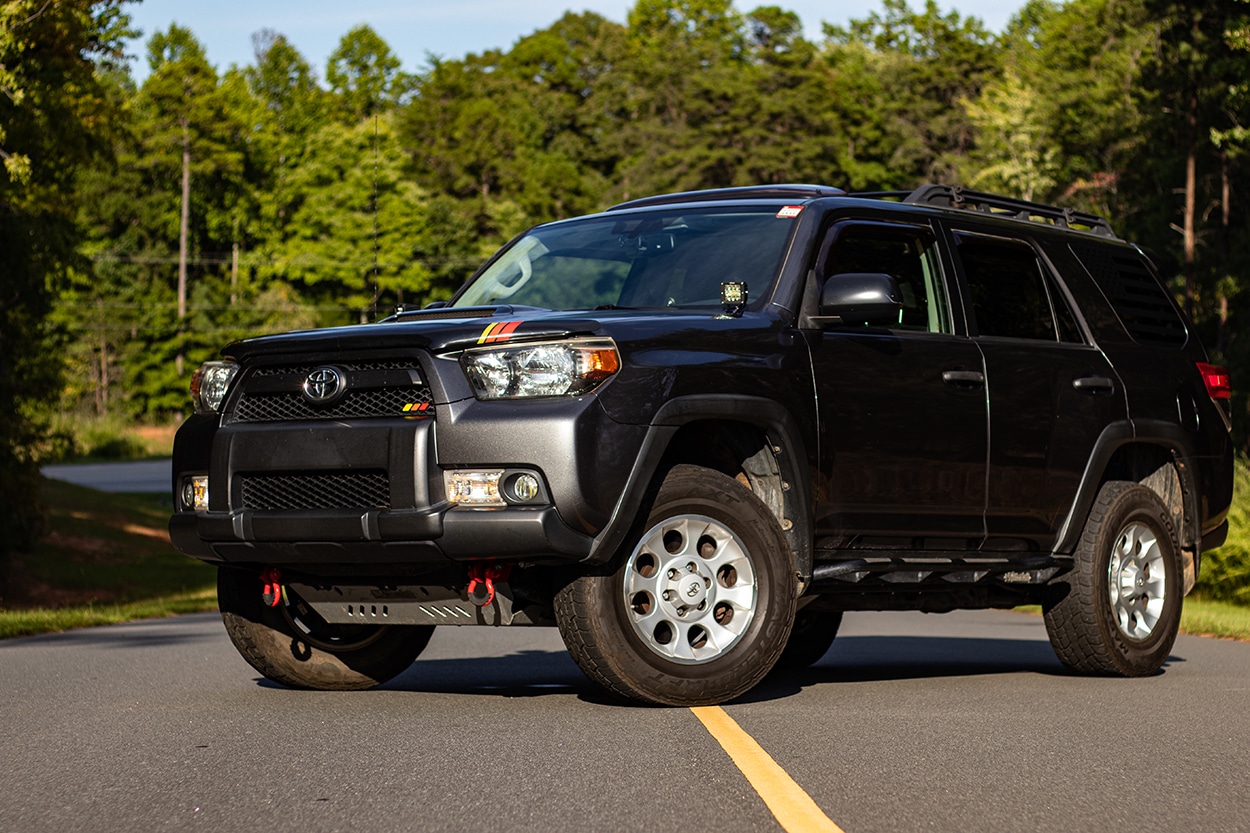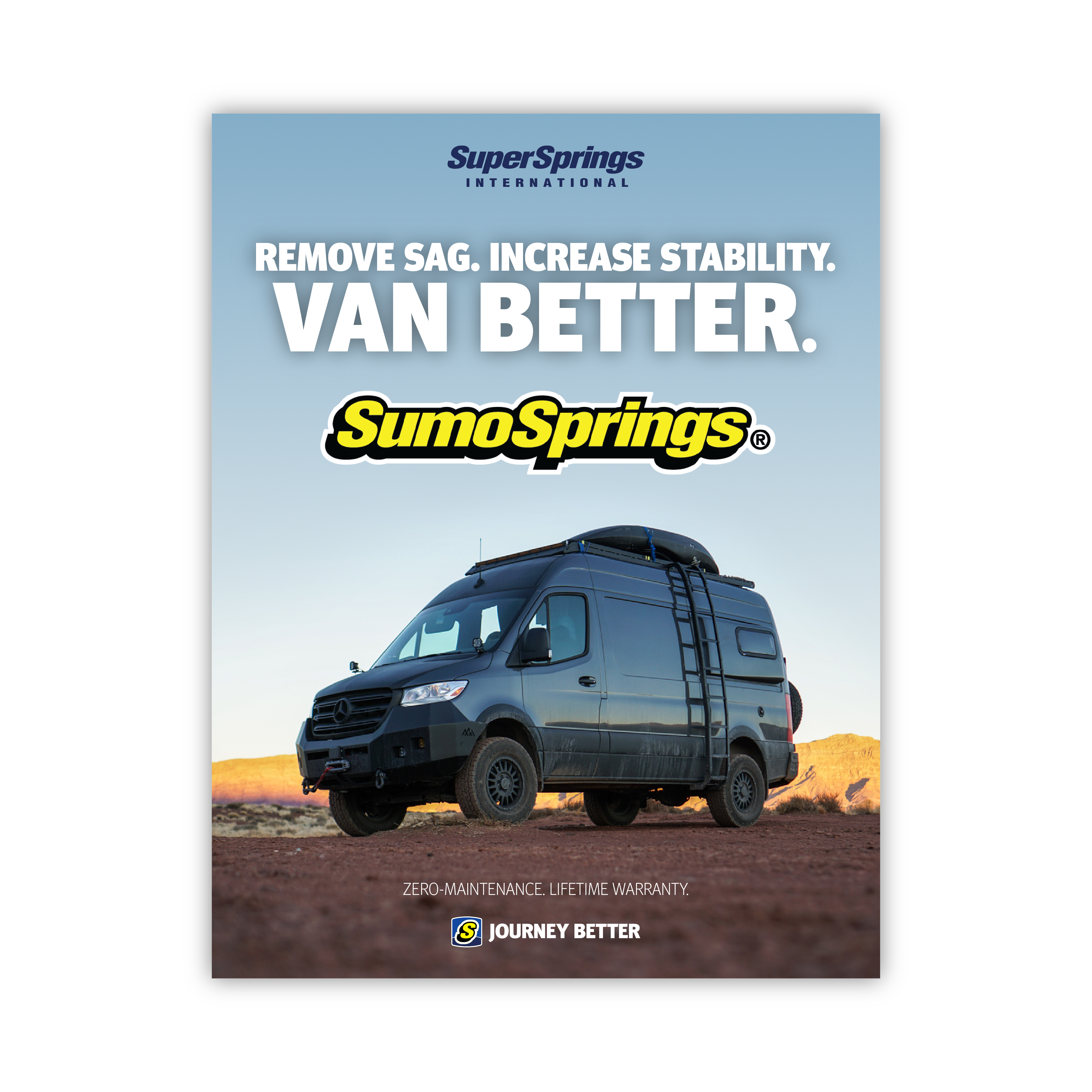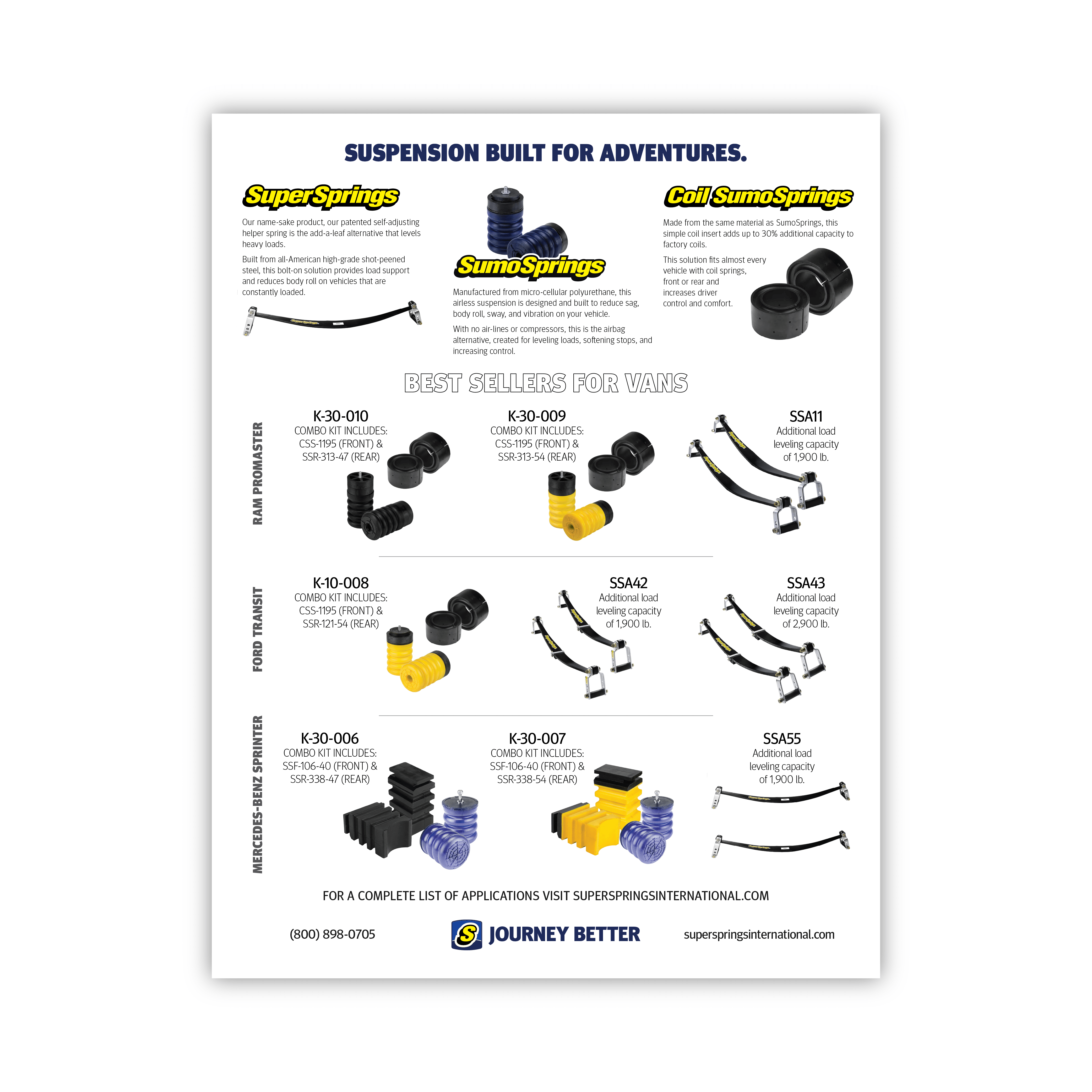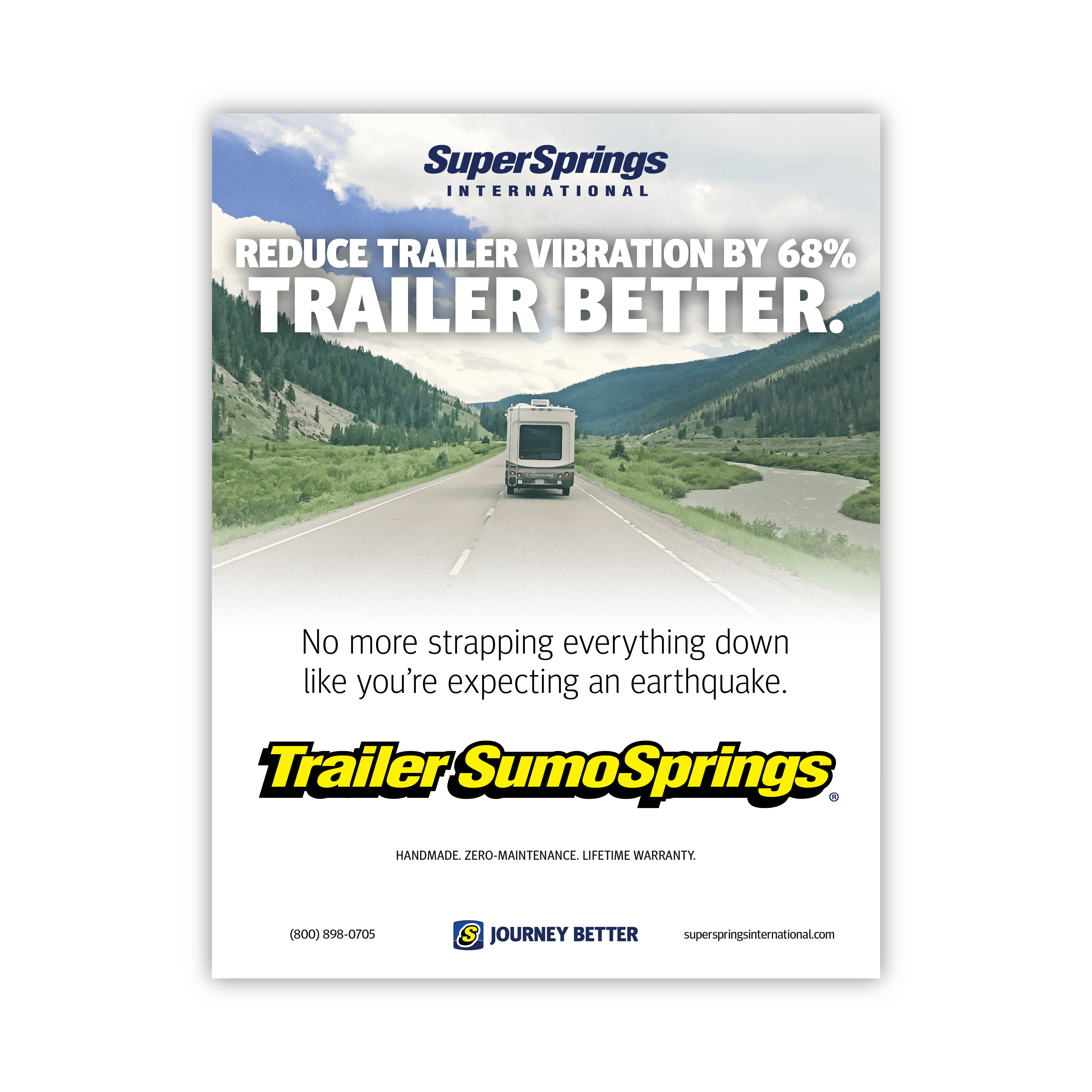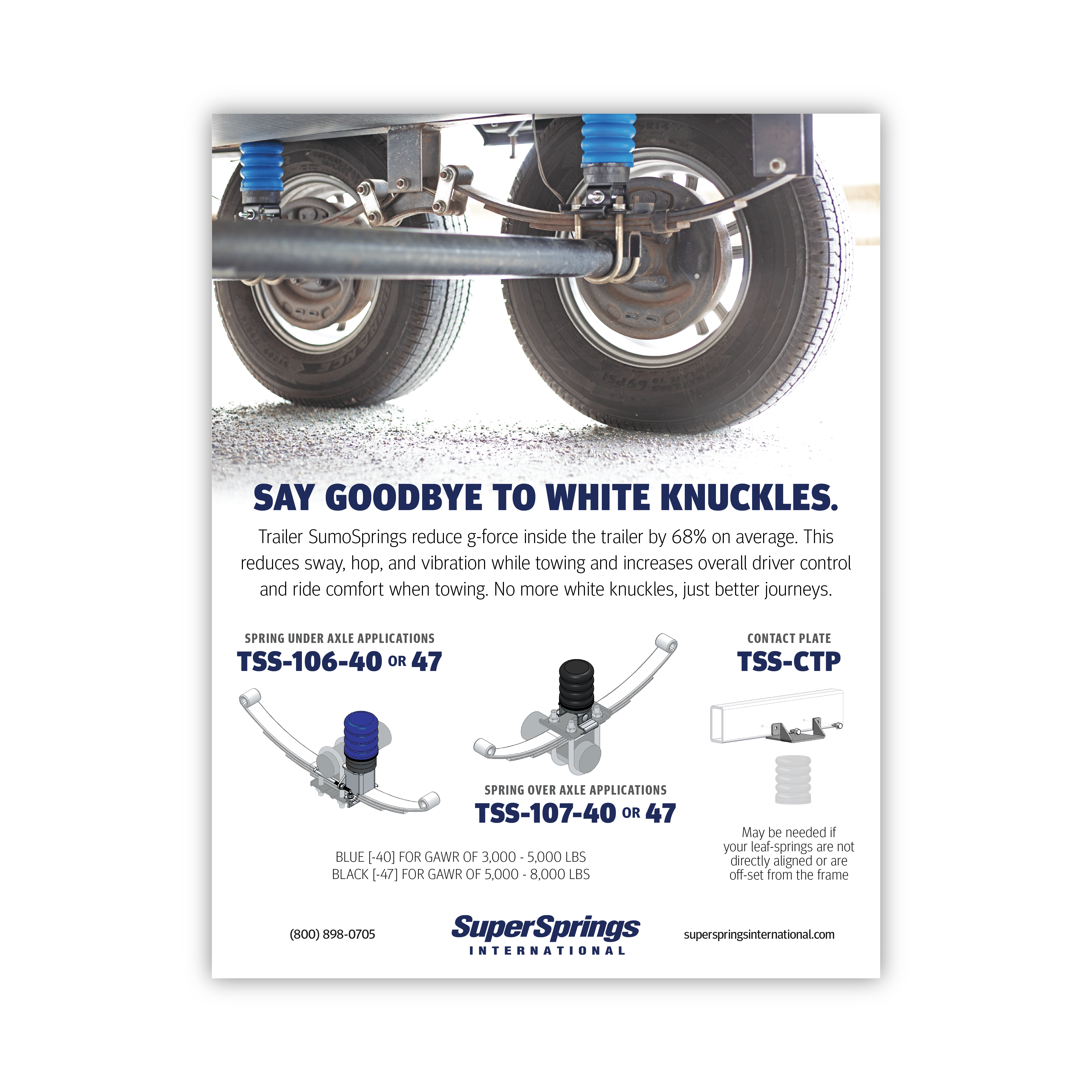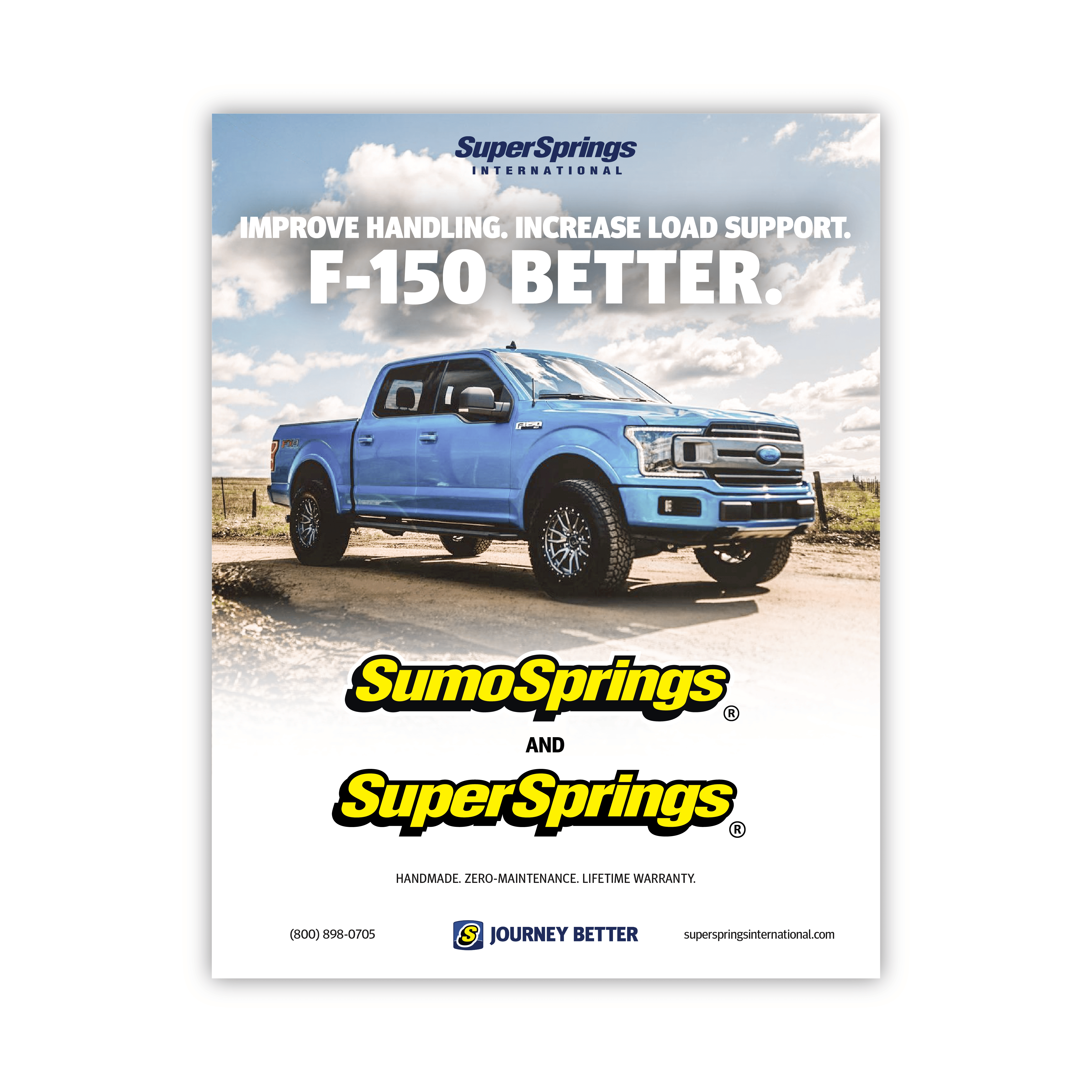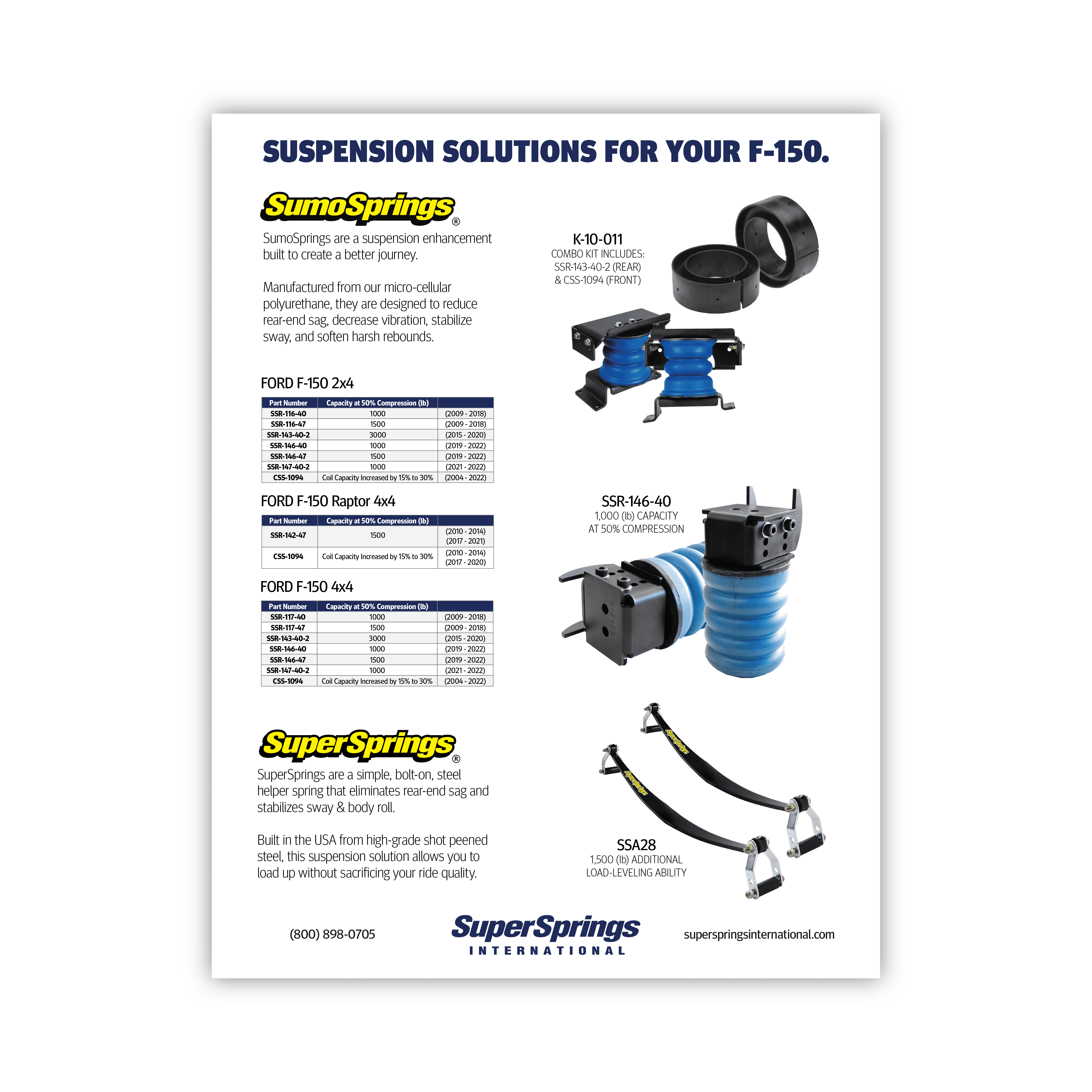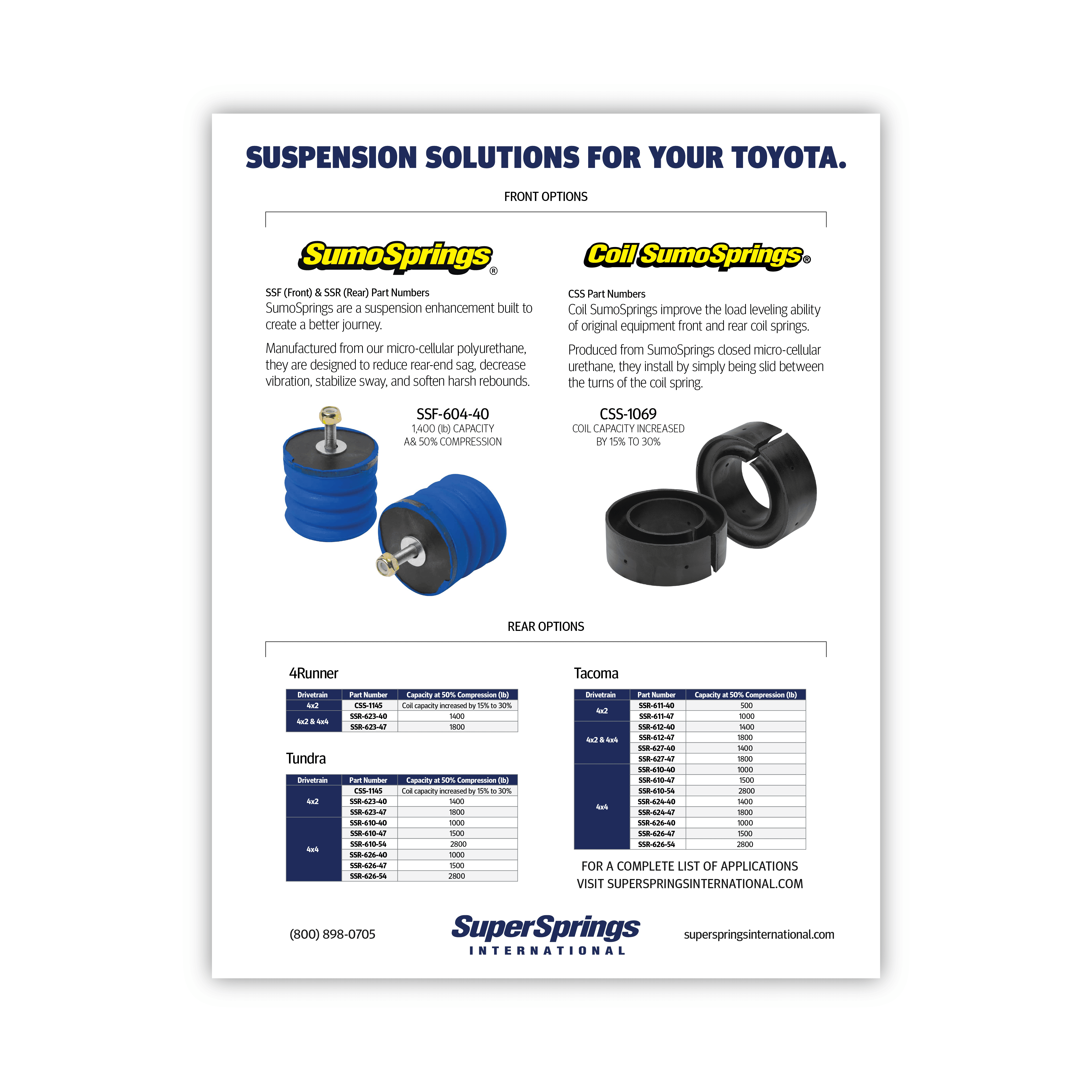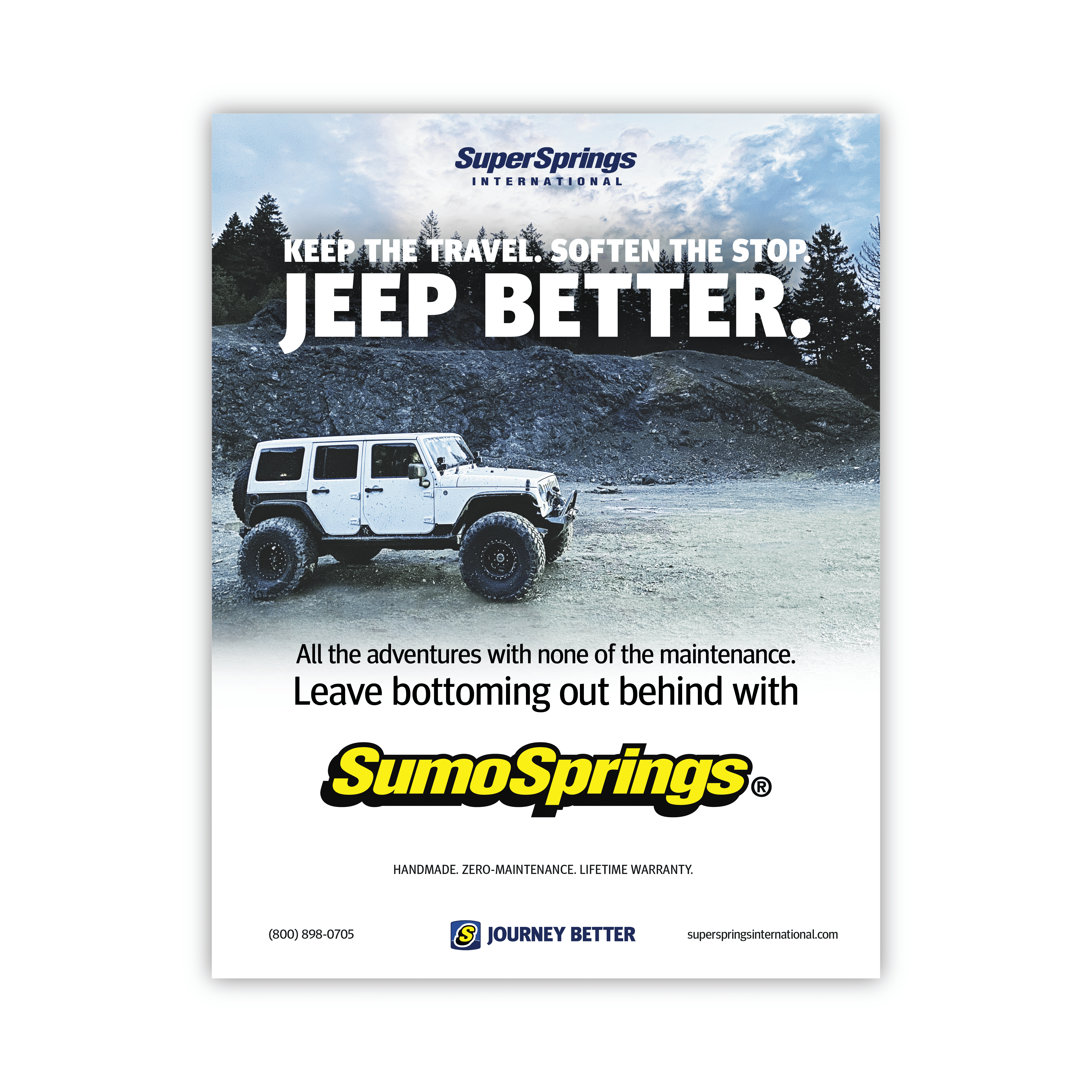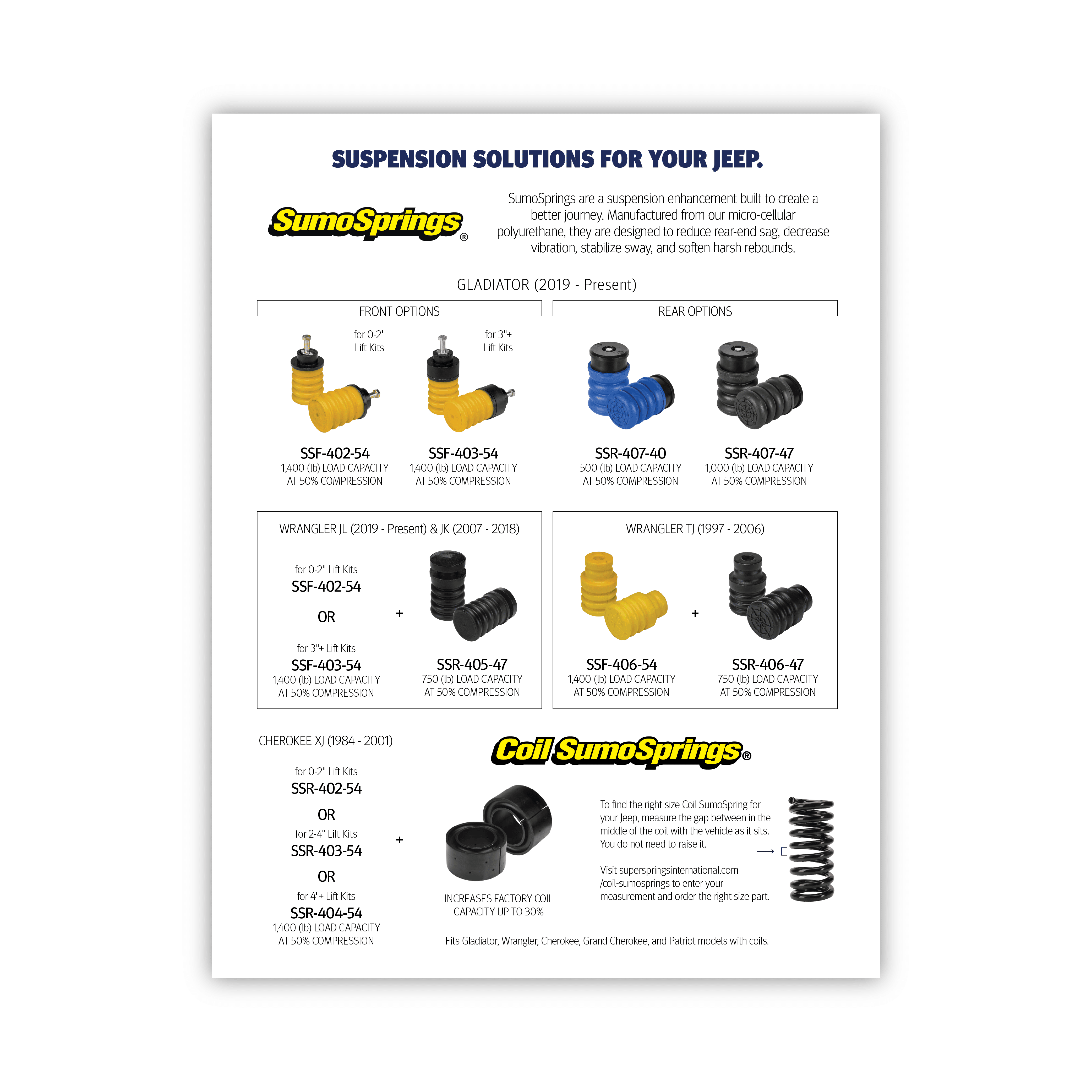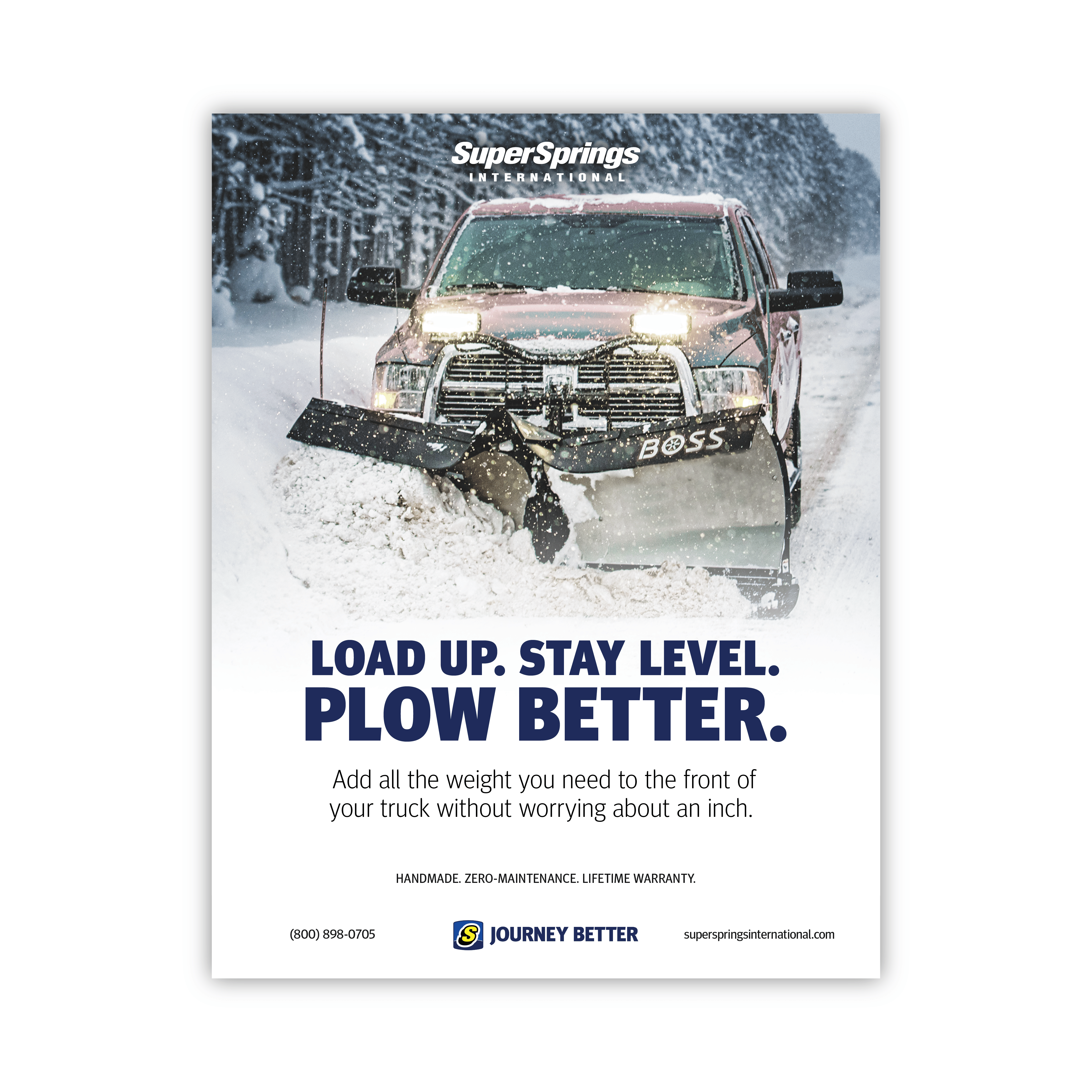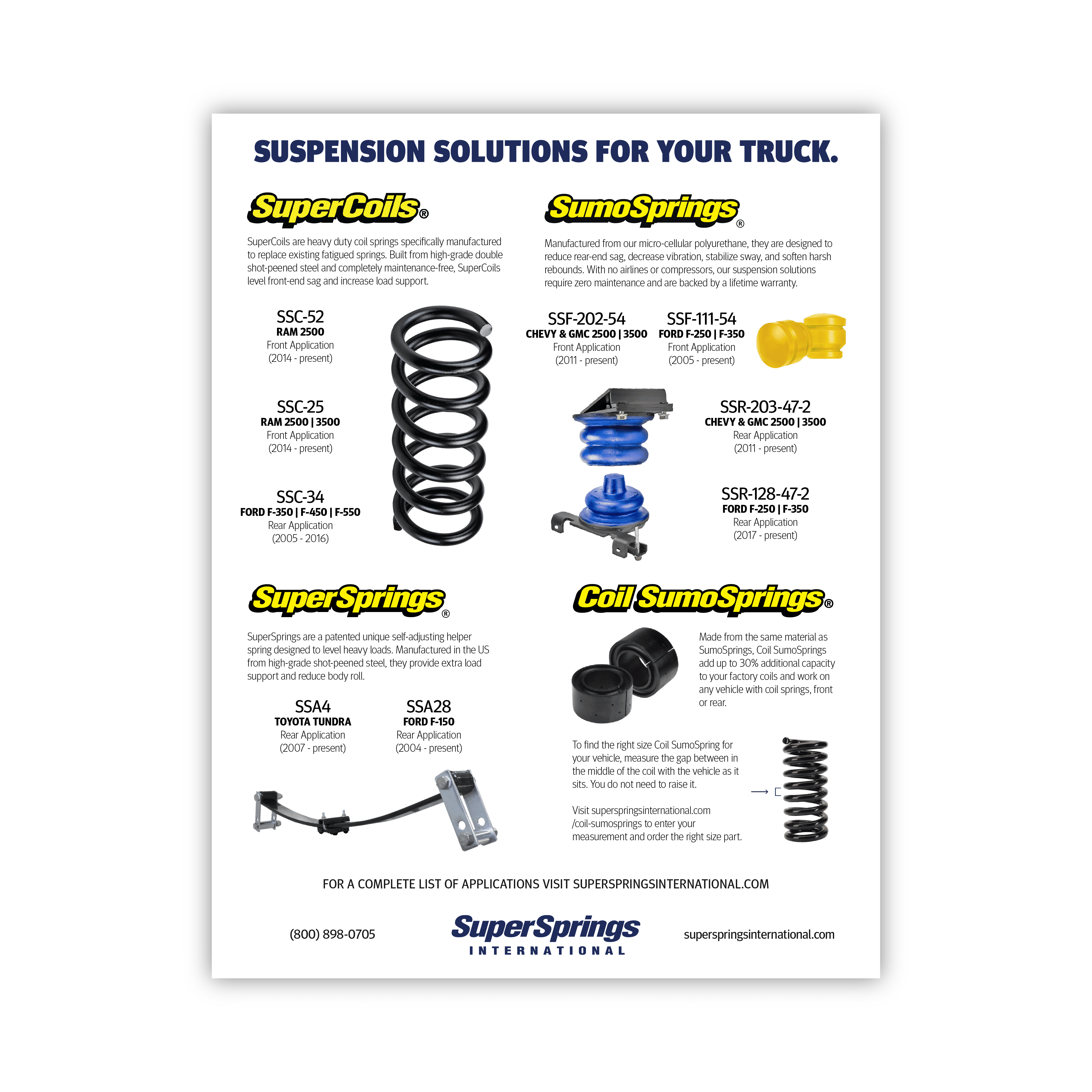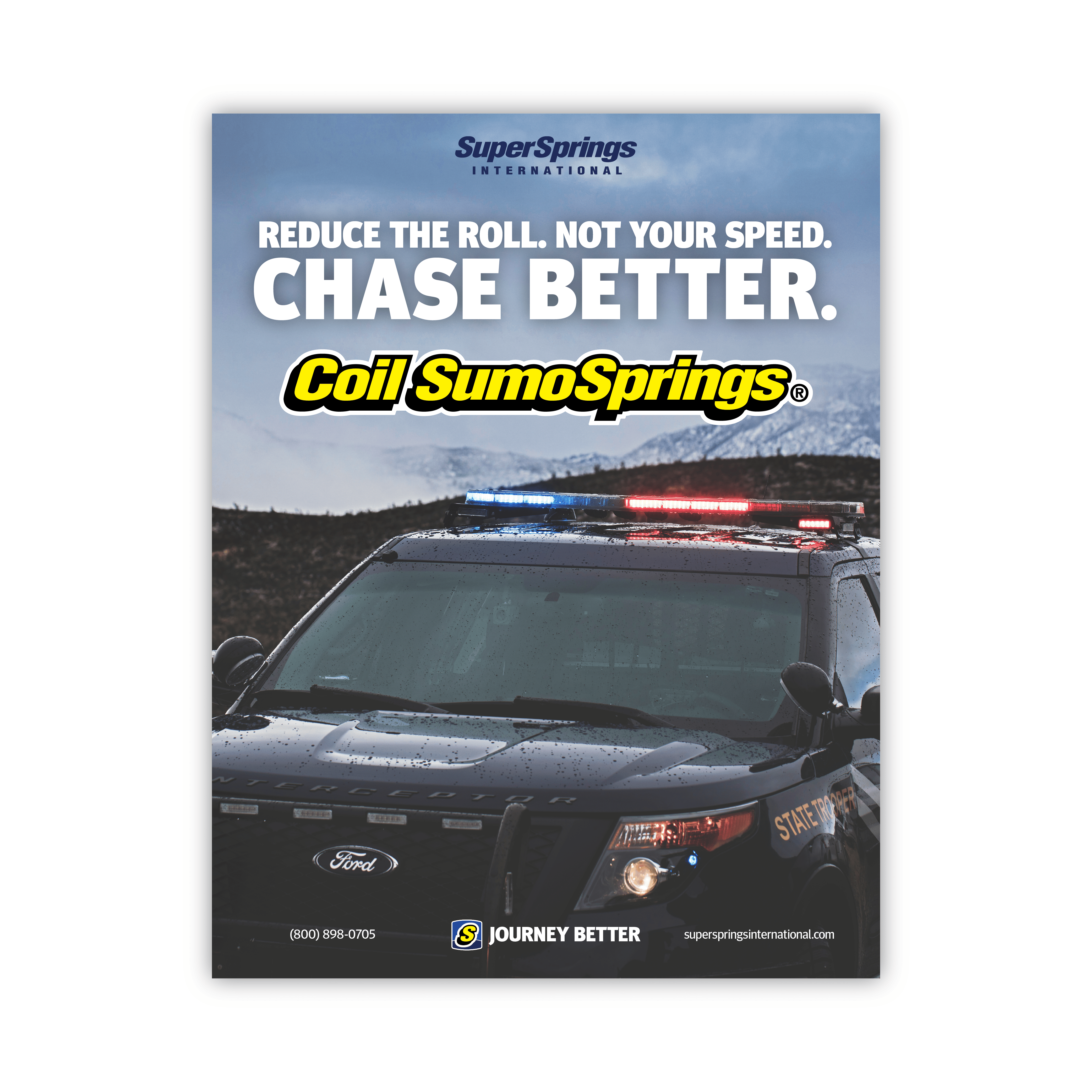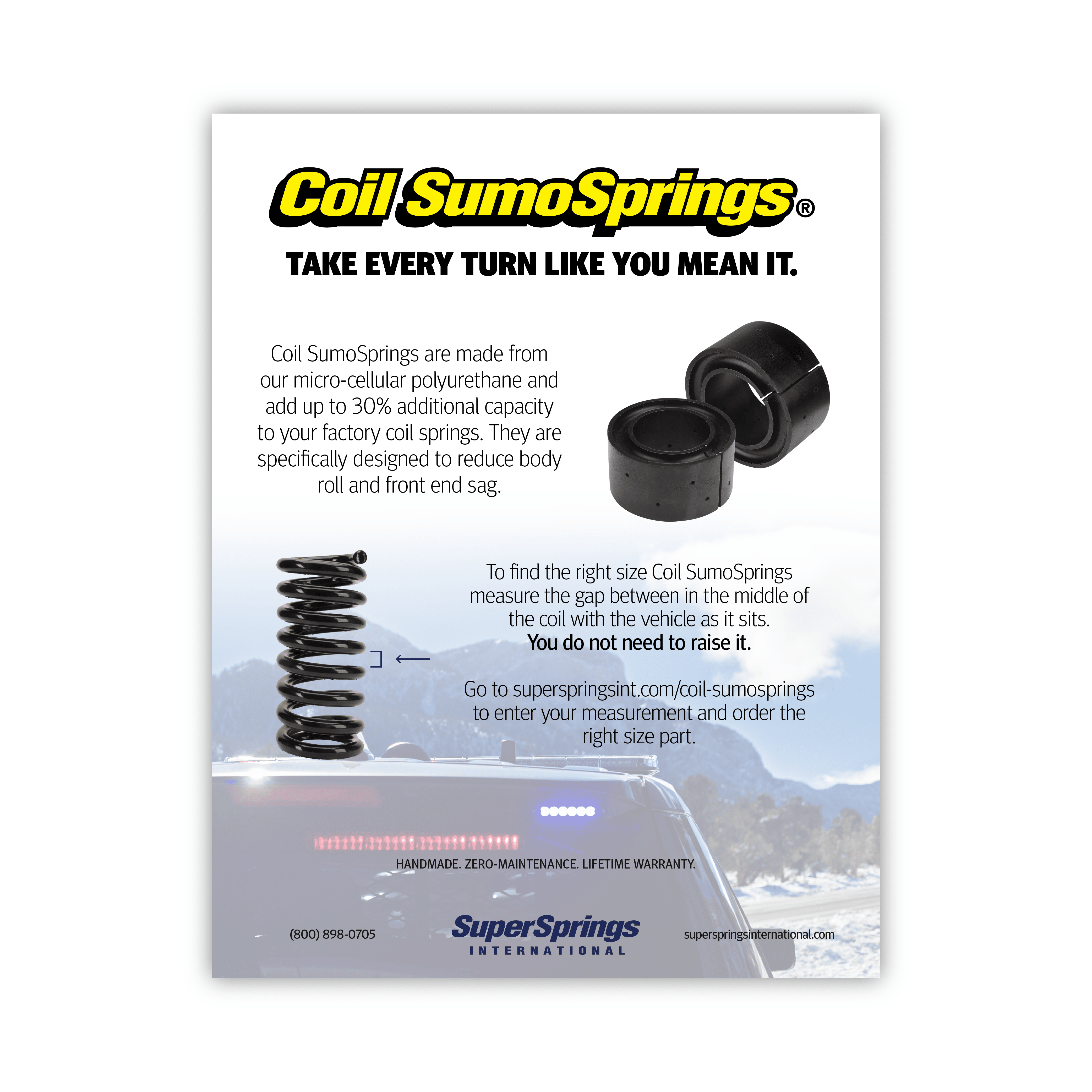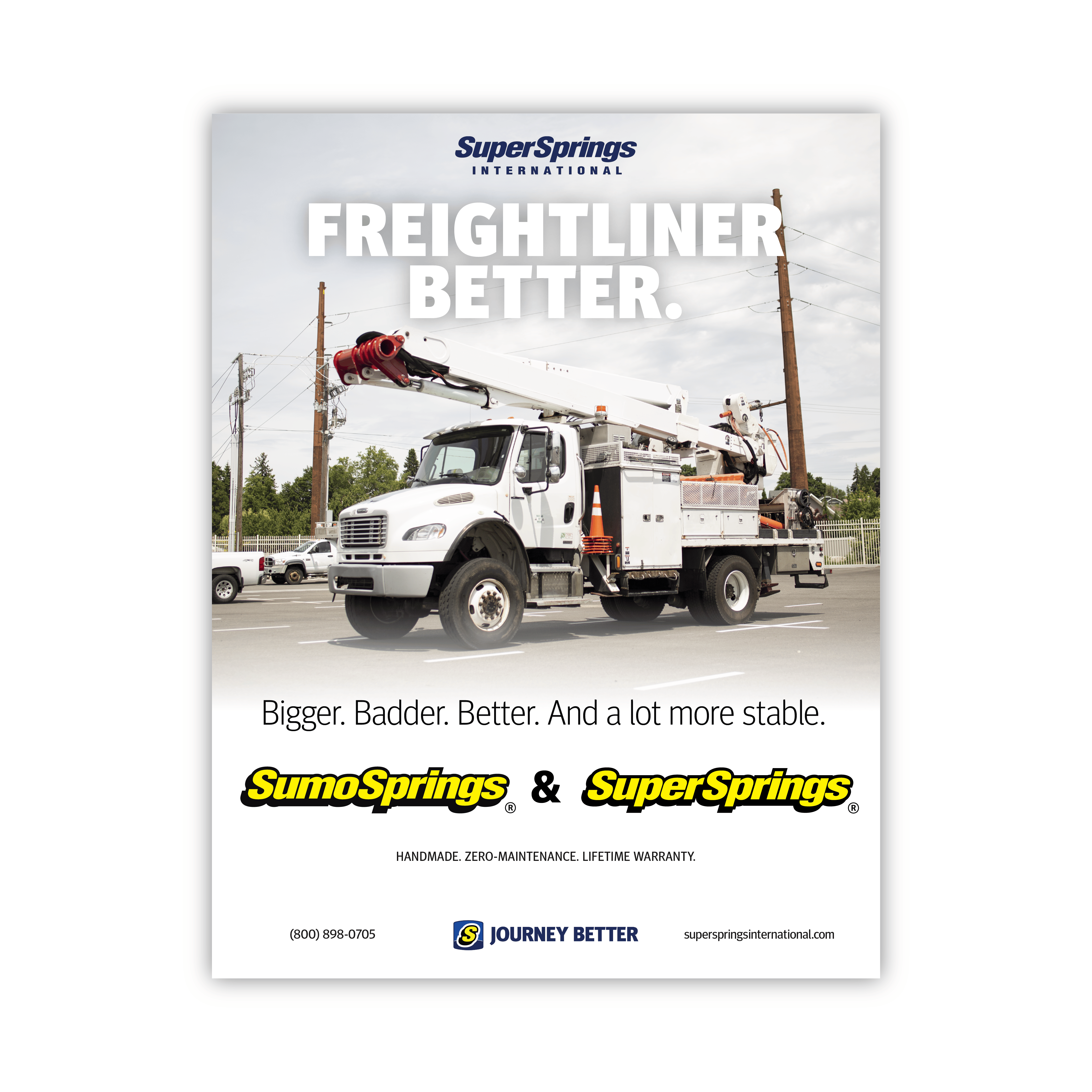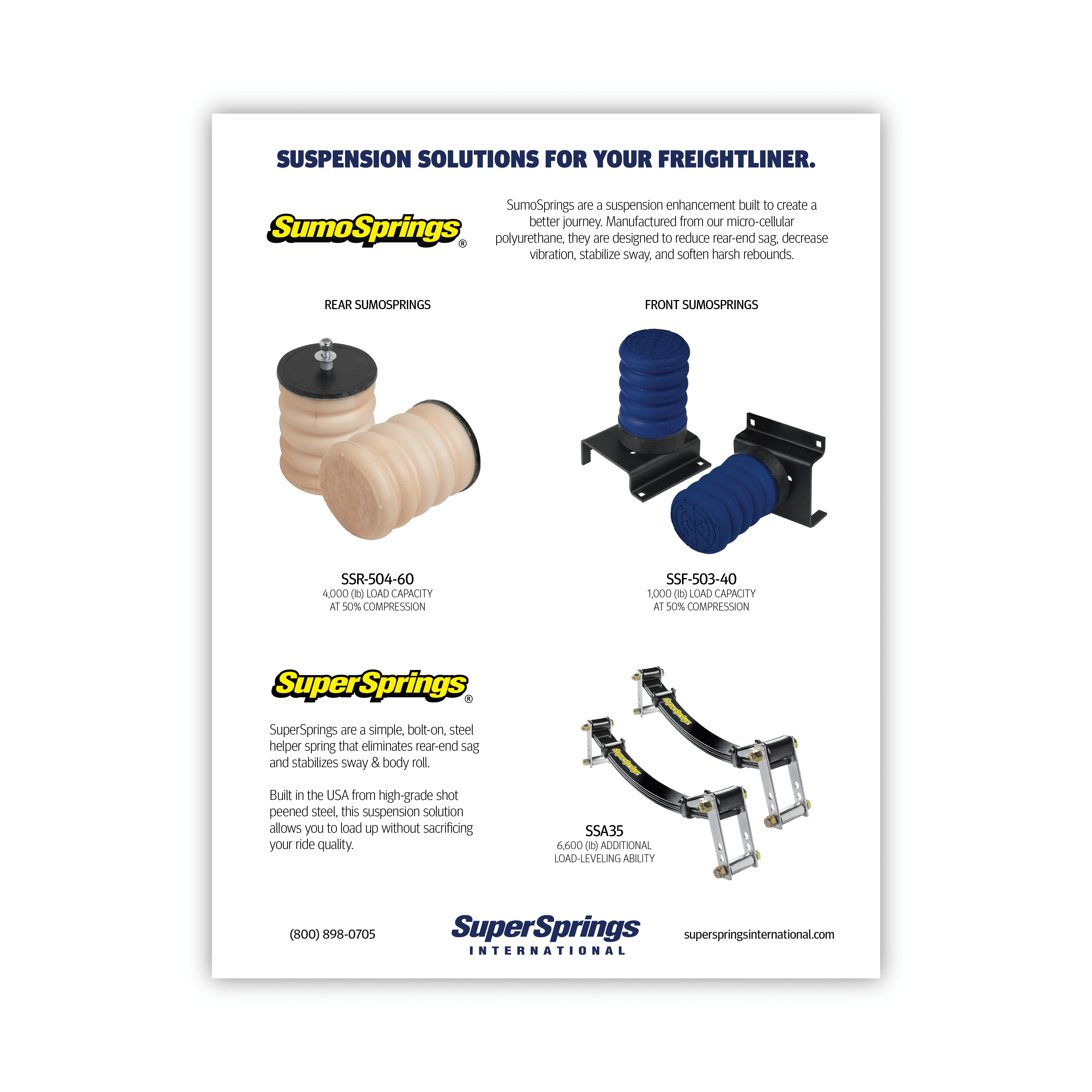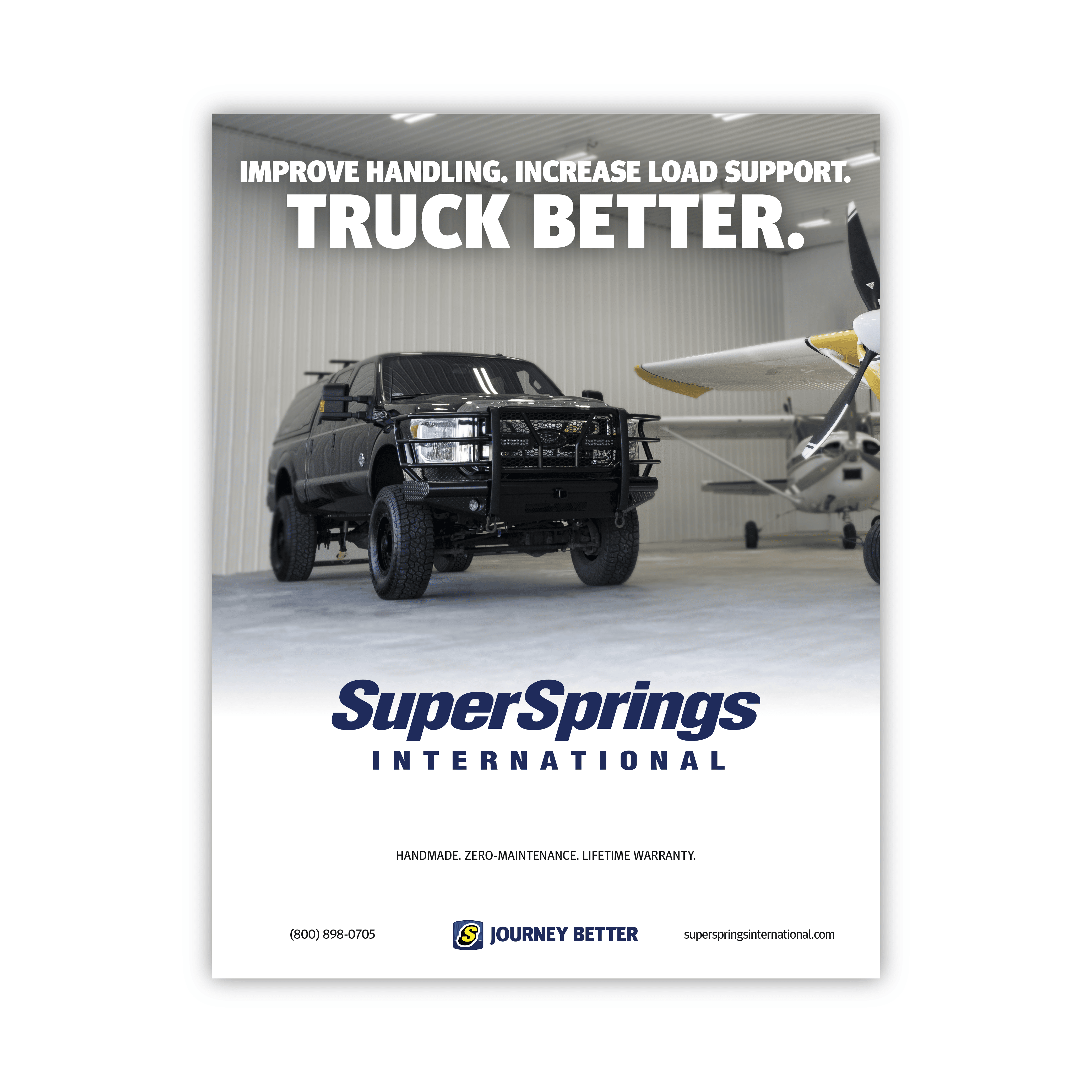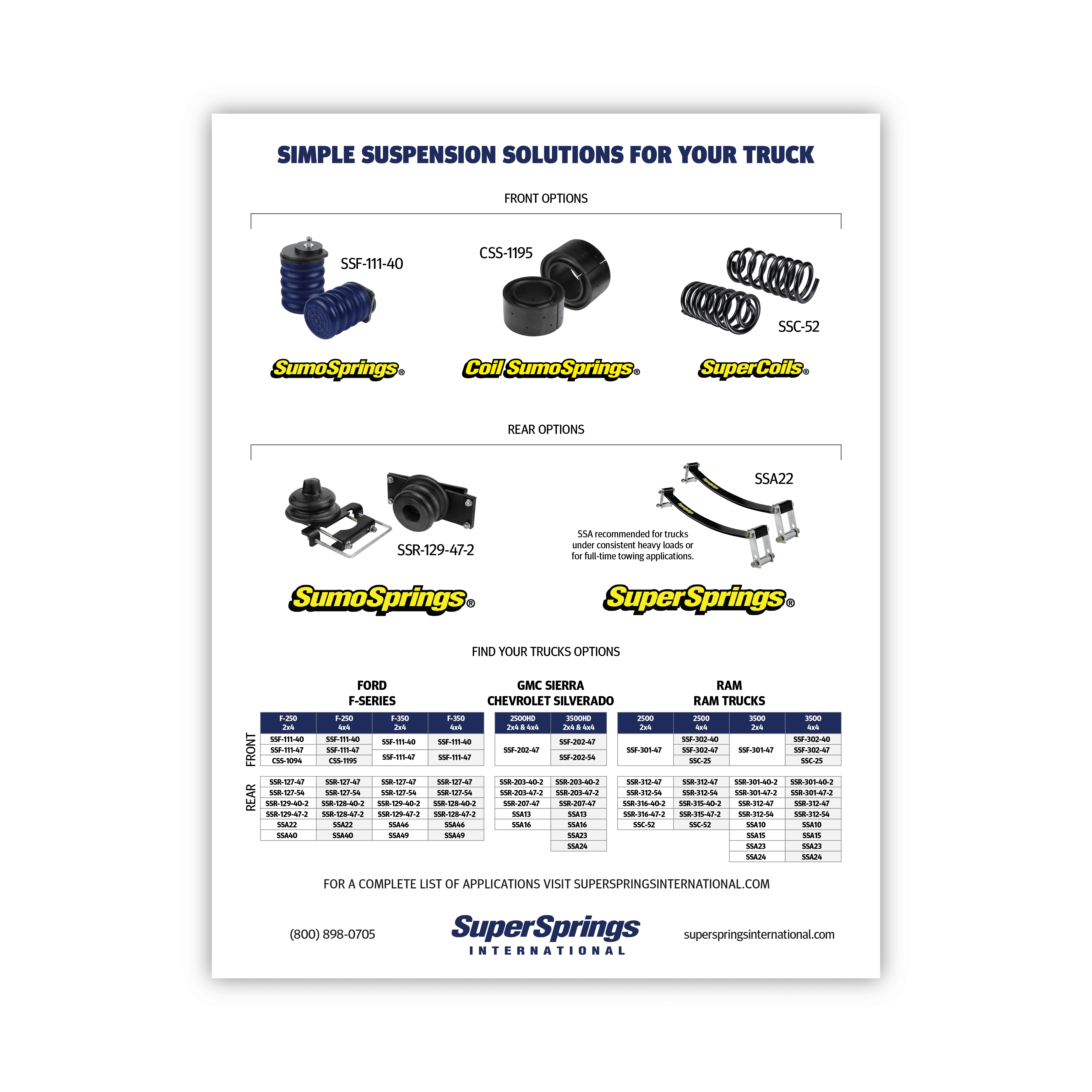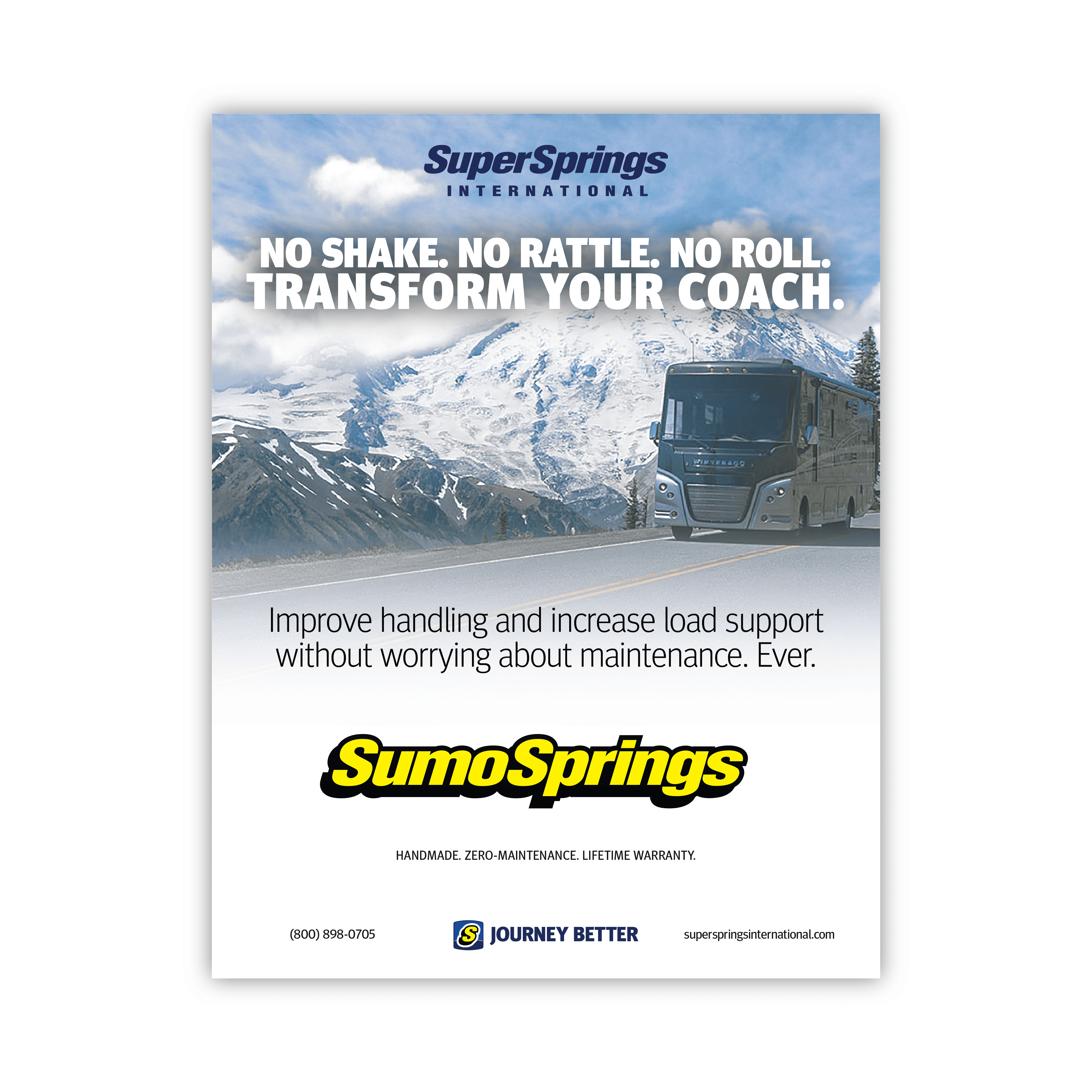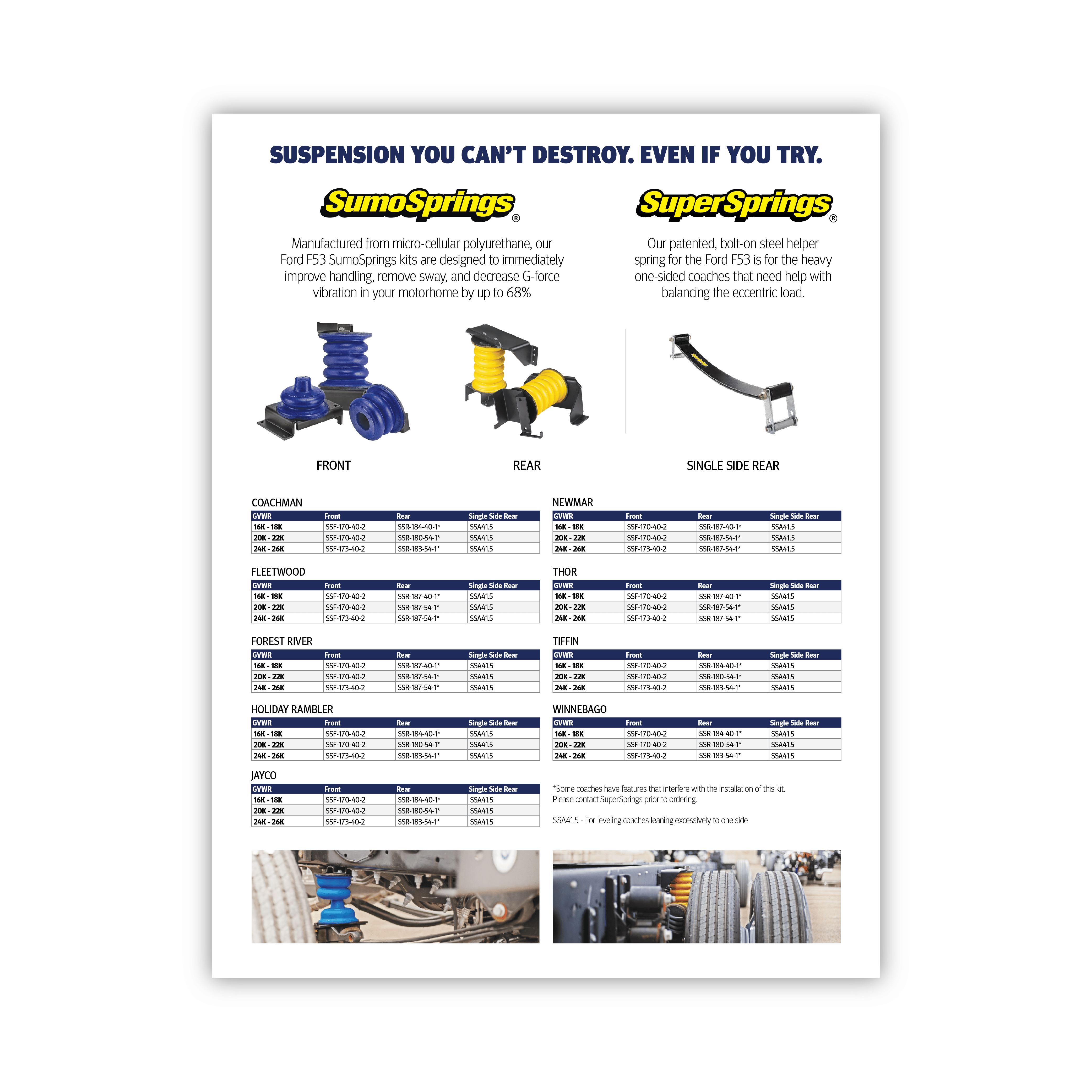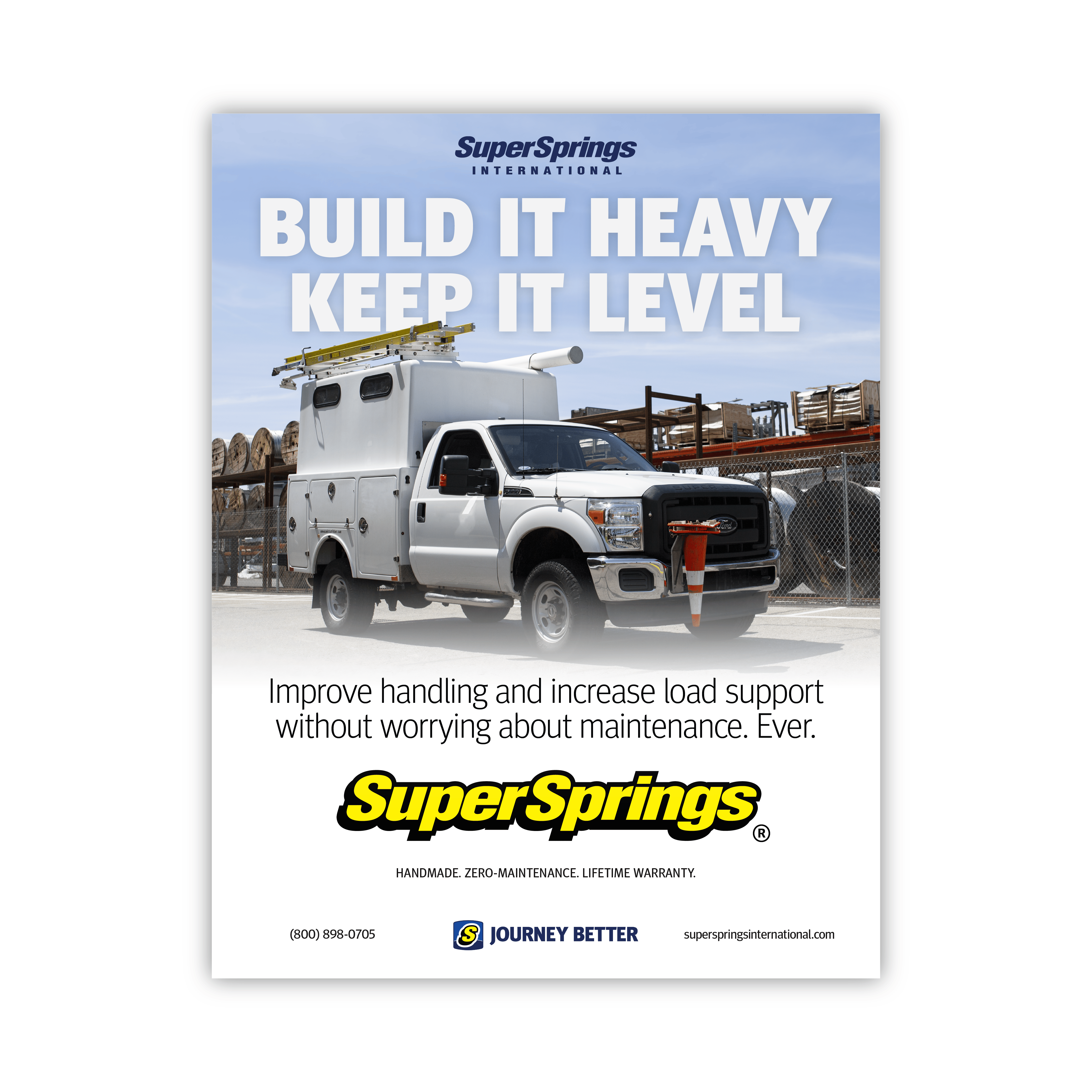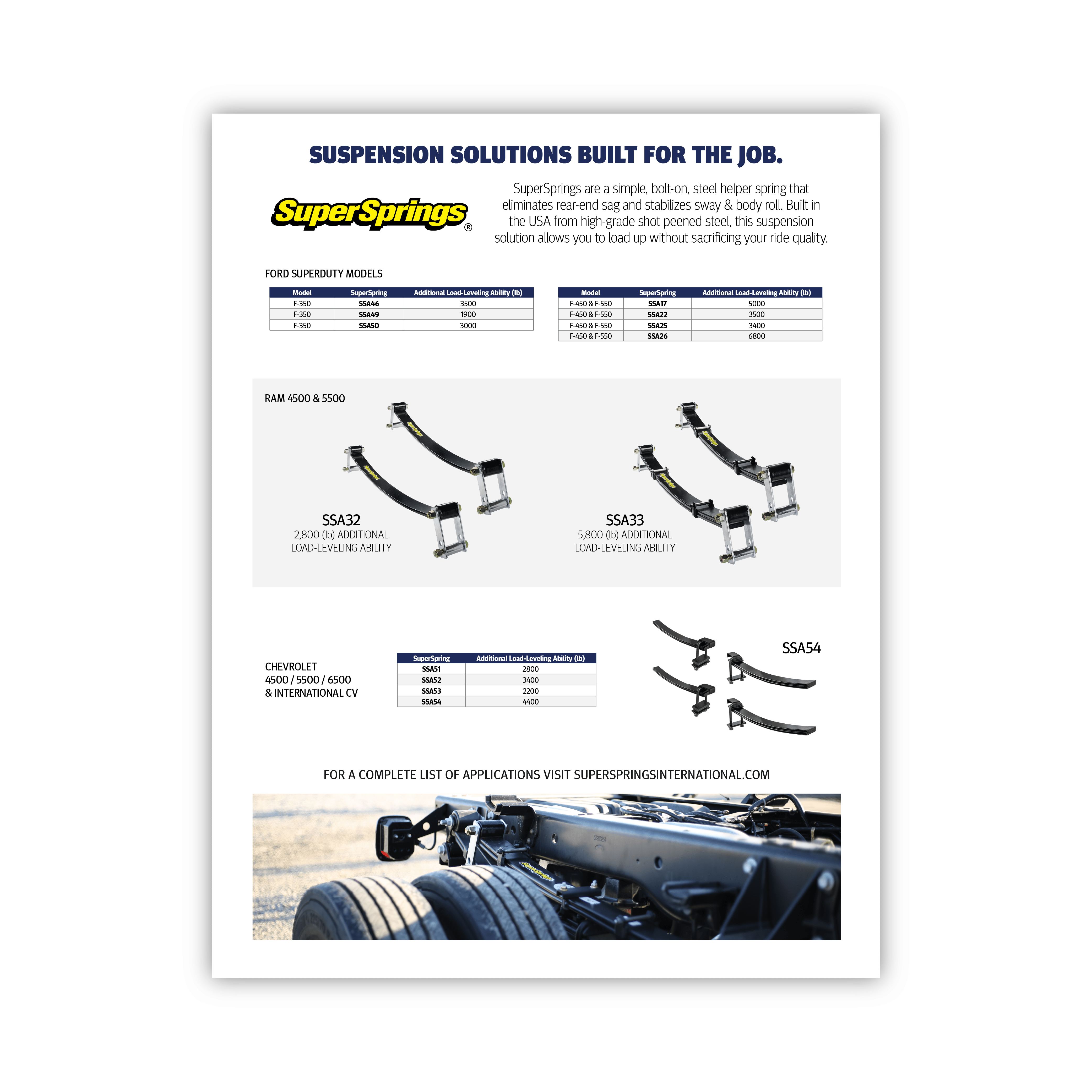Original post by Rick Hiner of Trail4runner
GREAT FOR SUSPENSION LIFTS WITH WEIGHT AND/OR LIGHT TOWING FOR 5TH GEN 4RUNNERS
I drive a 2011 4Runner Trail Edition that I purchased used in July of 2018 with only 58,000 miles on it. It has been a perfect vehicle without any problems and now has 105,000 miles on it. I already told my story in a previous article covering the installation and review of the 4xInnovations full skidplate package.
Today, I want to tell you about another addition to my rig that I am very excited to introduce; the Coil SumoSprings from SuperSprings International. If you are not familiar with SuperSprings International (SSI), they produce a pretty extensive line of suspension components, such as bump stop replacements and other load-carrying enhancement upgrades for many truck and SUV platforms.
What are Coil SumoSprings?
I have a mild lift on my 4Runner (Bilstein 5100s in front set at 2.25” and 5100s in the rear with all stock springs) that I did just to level it out.
Because of this, when I put a load in the back, whether it is camping gear or bags of mulch, I get anywhere from half an inch to an inch of sag in the back and it looks like a weak attempt at a “Carolina Squat” which is not a good look on a 4Runner. I was hoping that the Coil SumoSprings booster could give me a tiny bit more load capacity in the rear so that I could carry some mulch or go camping and still be level in the back.
Why Coil SumoSprings
What attracted me to the Coil SumoSprings was the price, ease of installation, and the possibility that I could get some of the benefits of heavier springs (more load capacity and a minor lift) without the expense or hassle of changing the springs.
How do you know what to order and what is included?
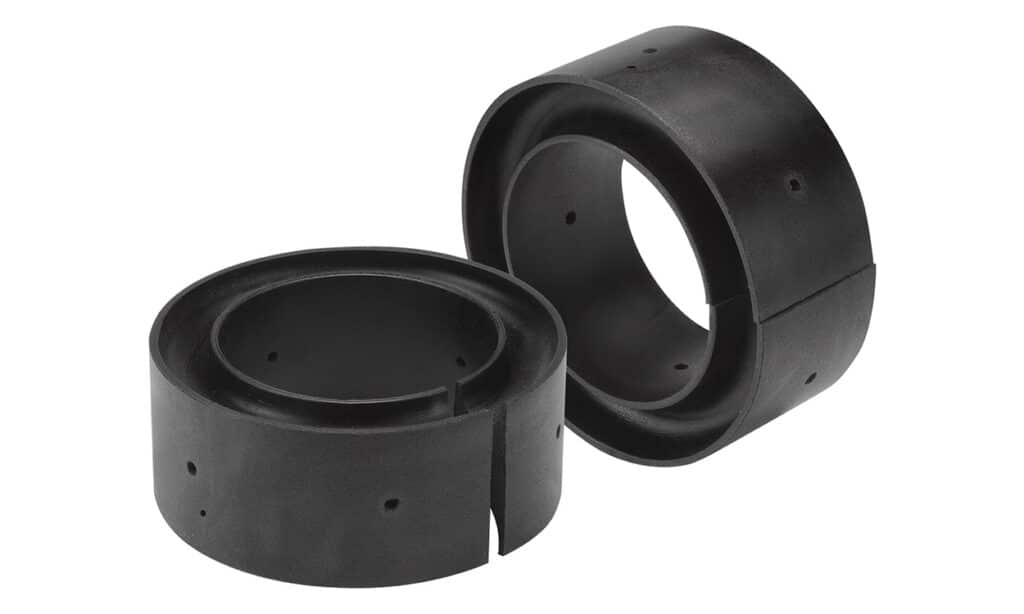
Coil SumoSprings are made of injection-molded micro-cellular urethane foam and are designed to act as a “helper” spring in your existing coils (they claim to increase the coil capacity by 15% to 30%). To determine the size for your vehicle, the process starts with measuring the gap between your rear coils while at rest on a level surface.
I rolled under my 4Runner and measured the gap in the middle of the coil at 25.78mm or 1.012” and that meant, according to the SSI website, that I needed the CSS-1125 (this size is for gaps of 1” to 1-3/16”).
Once I received the package from SSI, I was surprised to see how simple it was. When the box arrived, it contained two Coil SumoSprings and an invoice, and that was it.
Join the #JourneyBetter Community
Embark on a better journey with SuperSprings International. Sign up for our newsletter to receive professional tips, product updates, and exclusive offers.
THE INSTALLATION PROCESS
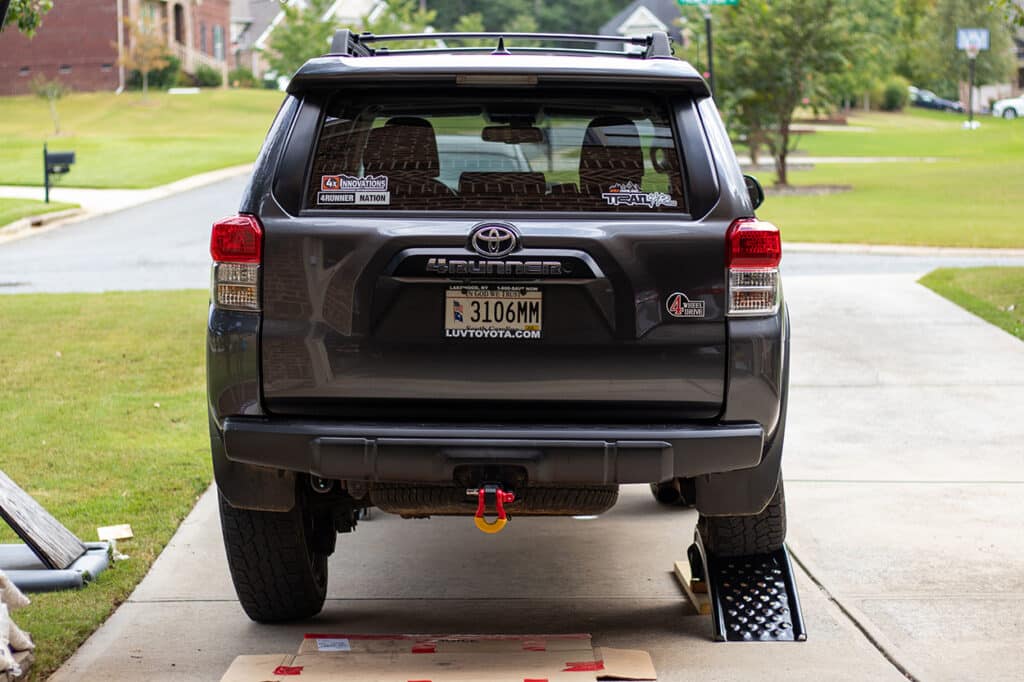
TAKING MEASUREMENTS
The first step was to take the 4Runner to a level parking lot so I could measure the unloaded ride height at the rear on both sides. I took the measurement centered on the wheel and measured from the ground to the bottom of the fender flare at the wheel arch opening.
Unloaded, I measured 35-1/2” on the driver’s side and 35-7/8” on the passenger side (this was with a full tank of gas and since the tank is on the driver’s side, it may explain some of the lean). Rather than load up all of my camping equipment, I then drove the 4Runner to Lowe’s and picked up four 60-pound bags of gravel (a total of 240 pounds) and loaded it in the back.
With this load in place, I re-measured the ride height as 34-3/4 on the driver’s side and 35-1/4 on the passenger side, a drop of 3/4” on the driver’s side and 5/8” on the passenger side. This isn’t much of a drop, I agree, but when you are sitting pretty close to a dead level, it is enough to make a noticeable squat.
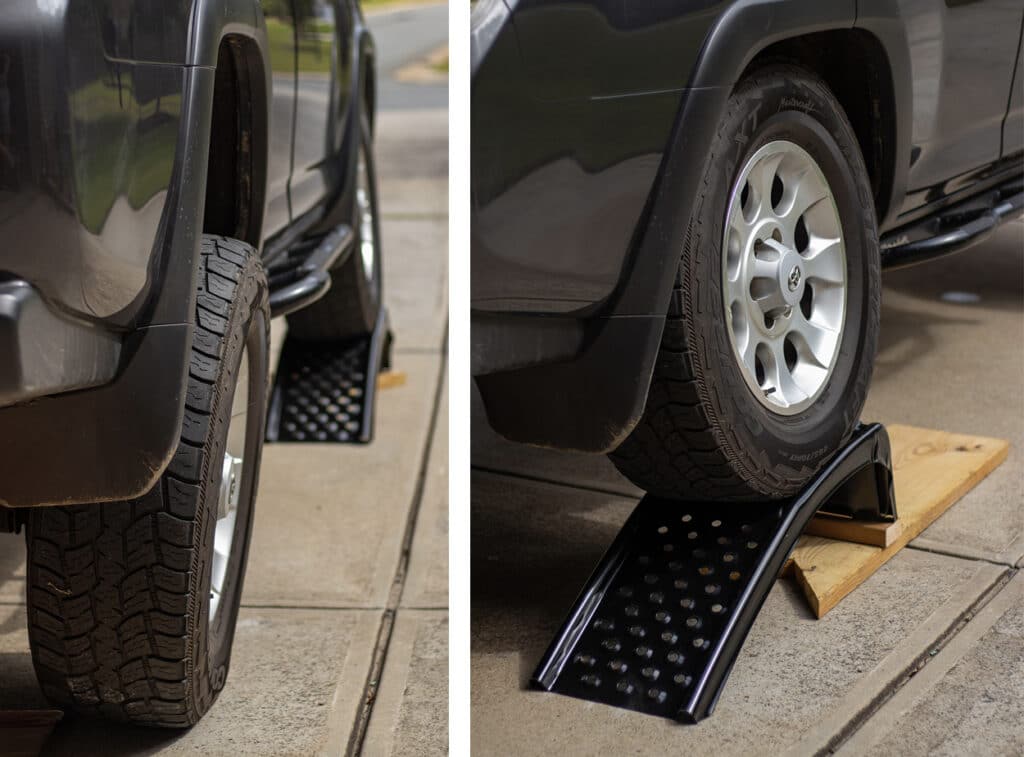
LIFTING ON RAMPS
Since I don’t have a lift to achieve full droop on the rear end, I had to figure out how to stretch out the springs enough to slip the Coil SumoSprings in between the coils. What I came up with was to use some 8” steel ramps from Harbor Freight on opposite corners so I could get some flex and I also added some lumber under the front of the ramps to get a bit more lift. I think I ended up lifting the left front and right rear about 11.5 inches each which proved to be perfect for the installation.
For detailed installation instructions from SSI, click here.
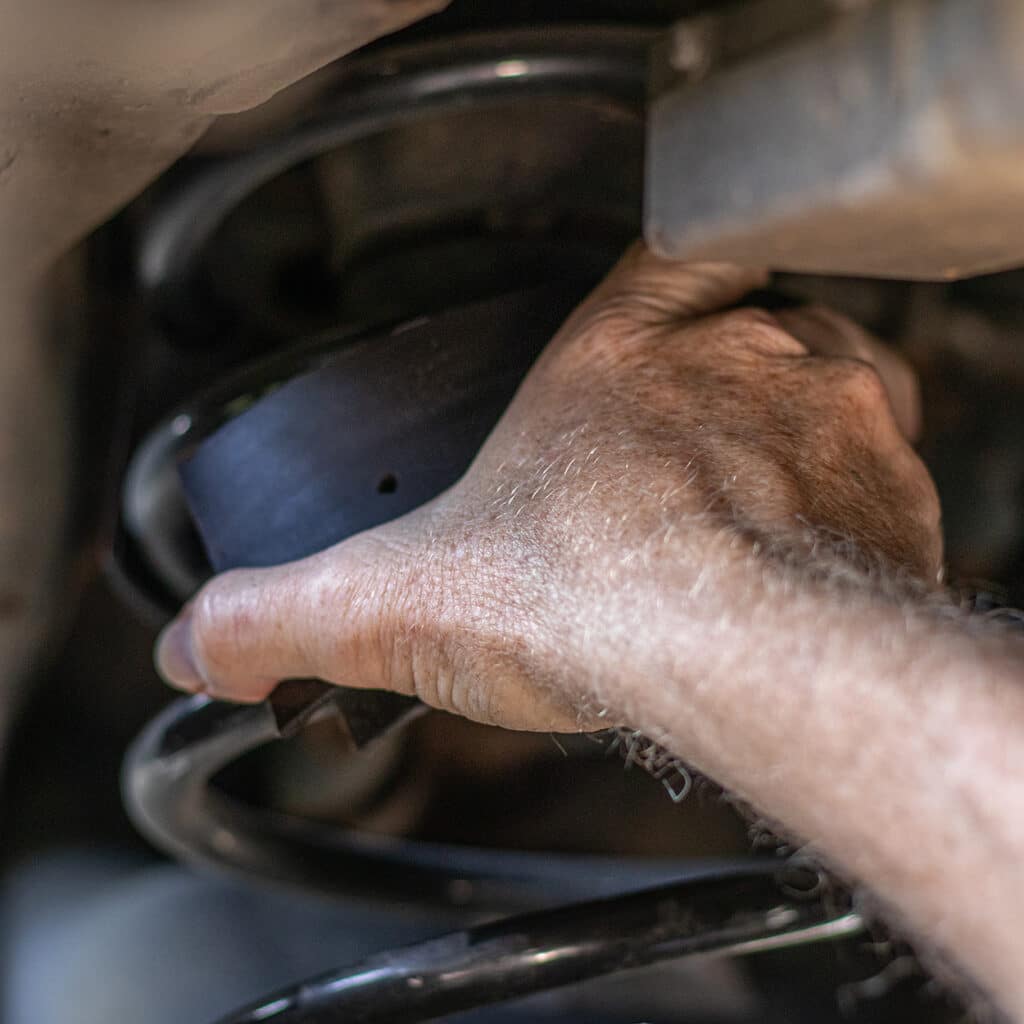
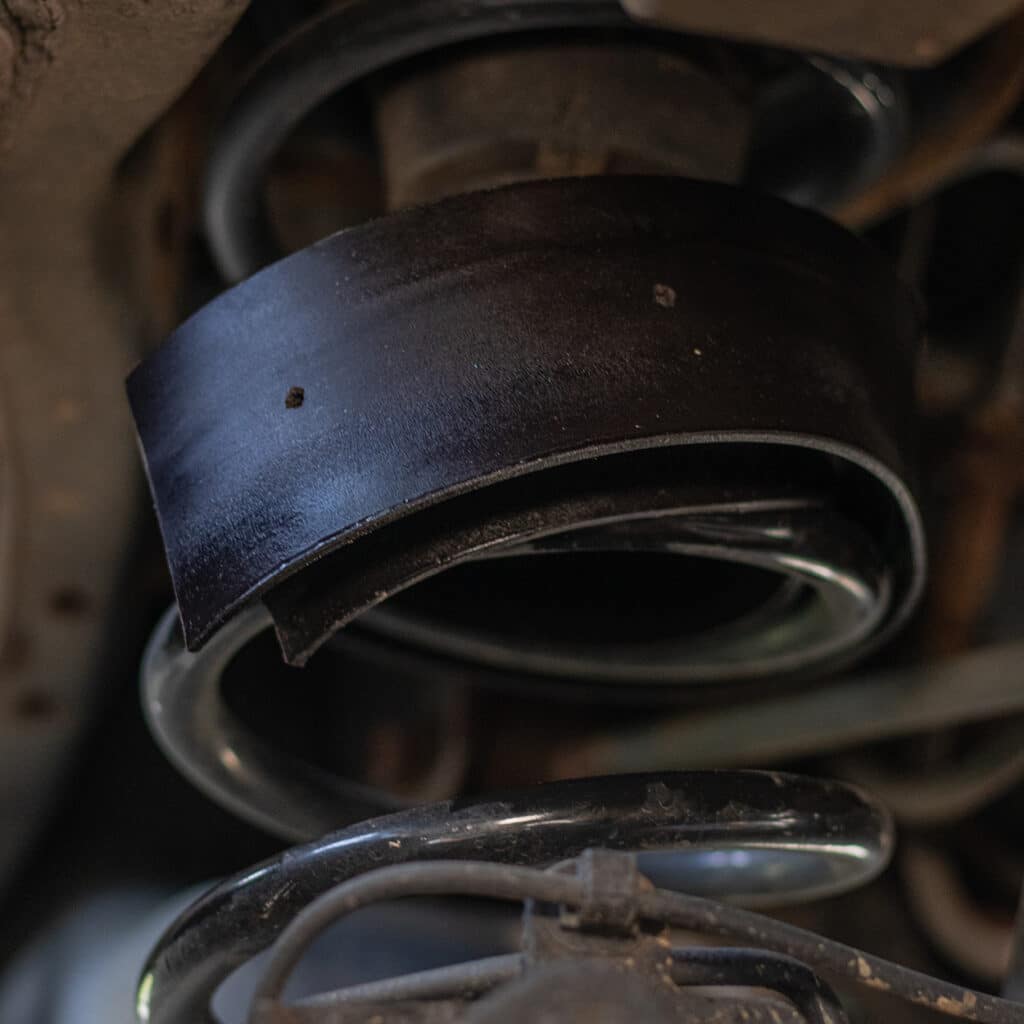
INSTALLING THE COIL SUMOSPRINGS
Once I had the suspension flexed, the installation was a breeze. I jumped under the truck on some cardboard and slipped the Coil SumoSpring in place. Ensuring that the deeper side was on the bottom. Once you get it started, it pushed in very easily and the gap between the two ends when installed was about 2 inches, so no trimming was necessary. (If there is no gap or some overlap, you may have to trim some off of the ends to get at least ½ inch of clearance so the ends won’t touch when compressed).
THE OTHER SIDE
After the first one was installed, I pulled off the ramps, flipped them around, and pulled up on the right front and left rear so I could install the right side insert. The right side went even faster than the left side because I already knew what to do.
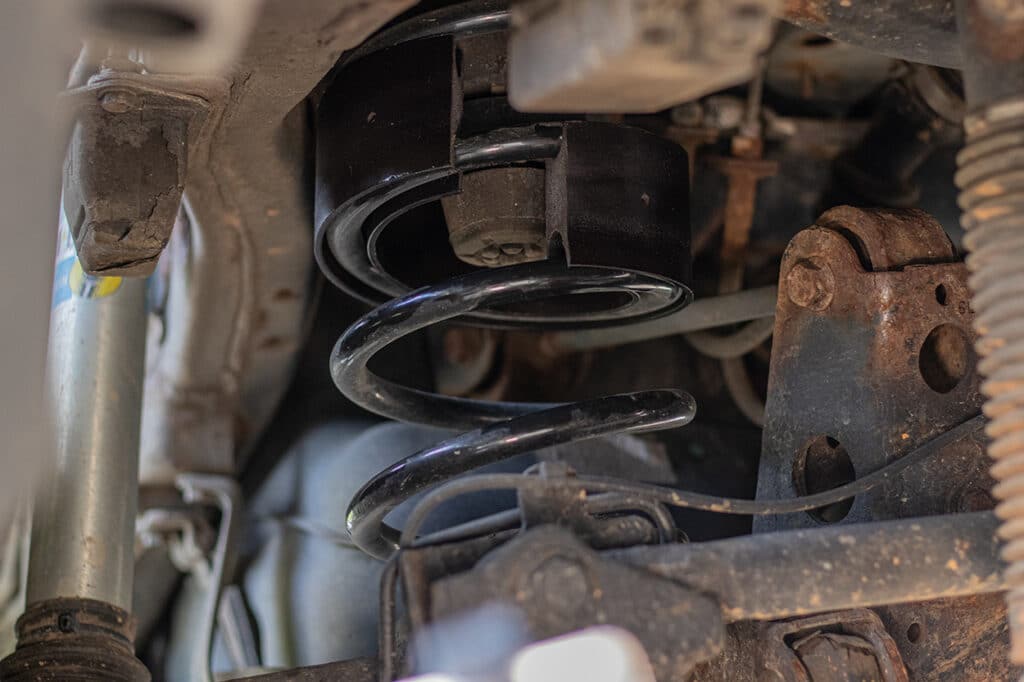
There were no specialized skills required for this installation, and as I said earlier, I did the installation on some steel 8” wheel ramps and not on a lift (which may not have been easier because it would have been harder to get the flex on a lift). There was nothing to remove and no tools were required at all.
Did it make a difference?
Following the installation, I repeated the ride height measurements I made earlier. I made sure to do it in the same parking lot and even in the same parking space as the before measurements so that it would be a valid comparison. While I wasn’t expecting an increase in ride height, I was pleasantly surprised to see that the unloaded height in the driver-side rear was now 35-7/8” (an increase of 3/8”) and in the passenger-side rear was also 36-1/8” (an increase of 1/4”). Loaded with the same 240 pounds of stone, the driver side was now 35-3/8 (an increase of 5/8”), and the passenger side was 35-1/2” (an increase of 3/4”).
This is a big improvement as the 4Runner now sits at basically the same level with the 240-pound load as it did before when unloaded. I am not sure why I got more improvement on the driver side than on the passenger side, but I am happy I did because that side sat lower to start with and now the 4Runner sits more level.
| UNLOADED BEFORE CSS | UNLOADED AFTER CSS | DIFFERENCE UNLOADED | LOADED BEFORE CSS | LOADED AFTER CSS | DIFFERENCE LOADED | |
| Driver | 35 1/2″ | 35 7/8″ | +3/8″ | 34 3/4″ | 35 3/8″ | +5/8″ |
| Passenger | 35 7/8″ | 36 1/8″ | +1/4″ | 35 1/4″ | 35 1/2″ | +1/4″ |
FINAL THOUGHTS
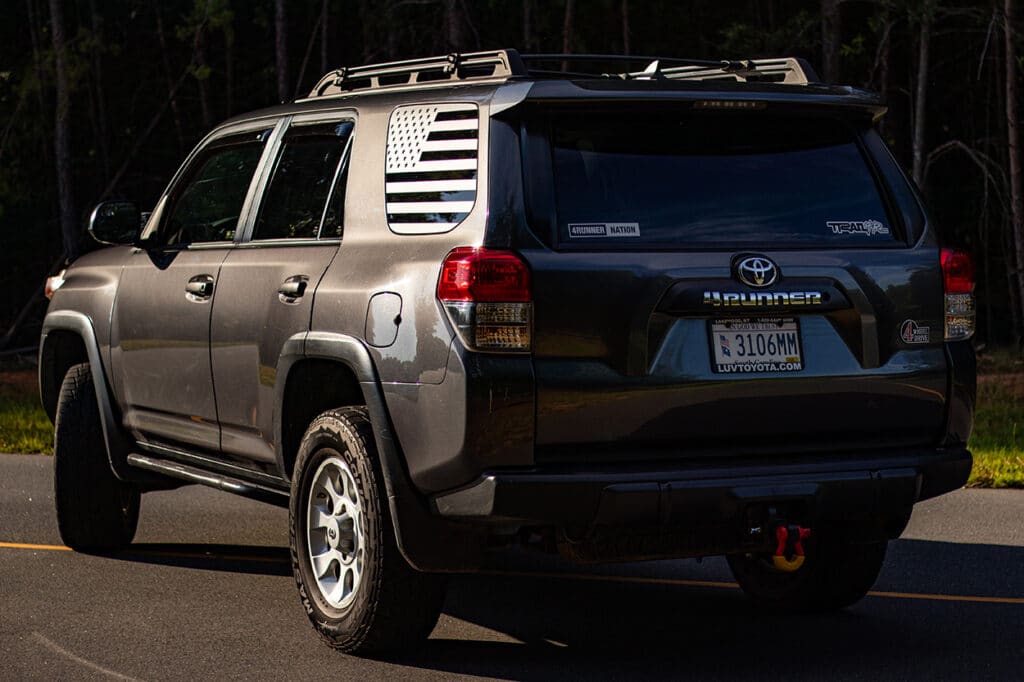
My ultimate goal was to have a truck that did not sag in the back when I loaded up the camping gear and I feel that I achieved that goal with the Coil SumoSprings. The installation could not have been easier and in the two weeks since the installation, the ride has been the same as before (certainly not any worse).
I do notice that the 4Runner rides just a bit higher in the back and that is nice to have a little rake in that stance again. Someday I would like to put a real lift with new springs on it, but for now, I am happy with this setup. As you can see from the photo below of my skidplates, I do wheel the truck when I can (usually at Uwharrie), so it is not just a Pavement Princess or Mall Crawler and I am more interested in modifications that actually enhance performance rather than just improving looks. So far, it does not seem that the Coil SumoSprings have not impacted my articulation and the tiny bit of extra clearance from the microlift in the back isn’t going to hurt.
ARE COIL SUMOSPRINGS RIGHT FOR YOU?
In summary, if you are looking for an improvement in load-carrying capacity for camping equipment or light towing, you can’t really go wrong with the Coil SumoSprings. They will definitely not replace an actual lift (they are not intended to) and they probably are not a good idea if you are doing a lot of heavy towing or are trying to offset the weight of a steel bumper and tire carrier, but if you are just doing some light towing or loading up the back for a weekend of camping, they may be just what you need and you won’t have to spend a lot of money.
Use our application guide to see what we have for your vehicle.


